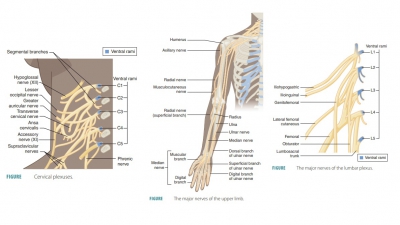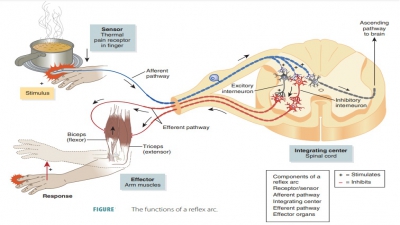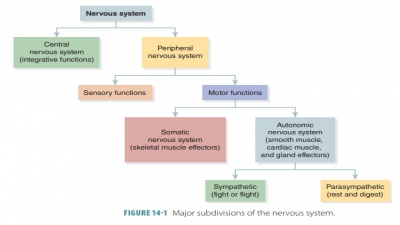Summary
| Home | | Anatomy and Physiology | | Anatomy and Physiology Health Education (APHE) |Chapter: Anatomy and Physiology for Health Professionals: Peripheral Nervous System and Reflex Activity
The PNS consists of peripheral nerves, which connect the CNS to the rest of the body. It is divided into the SNS and ANS.
Summary
The PNS consists of peripheral
nerves, which connect the CNS to the rest of the body. It is divided into the
SNS and ANS. Peripheral sensory receptors are specialized to respond to
stimuli. They include chemoreceptors, mechanoreceptors, nociceptors, photoreceptors, and
thermoreceptors. Sensory adaptation is the ability to ignore unimportant stimuli. The general senses of touch, pressure, tempera-ture, and pain
are spread throughout the body. Nonen-capsulated (free) nerve endings include
tactile (Merkel) discs and hair follicle receptors. Encapsulated nerve endings
include Meissner’s (tactile) corpuscles, Pacinian (lamellar) corpuscles,
bulbous corpuscles (Ruffini end-ings), muscle spindles, tendon organs, and
joint kines-thetic receptors.
Complex sense organs contain the
receptors for the special senses, which include hearing, vision, equilibrium,
smell, and taste. The somatosensory system serves the limbs and wall of the
body. Sensory (afferent) nerves carry impulses toward the CNS, whereas motor
(efferent) nerves carry impulses away from the CNS. There are 12 pairs of
cranial nerves and 31 pairs of spinal nerves. The main portions of the spinal
nerves mostly combine to form complex networks called plexuses. Peripheral
motor endings activate effectors via the release of neurotransmitters. The SNS
stimulates skeletal muscles, whereas the ANS innervates glands, cardiac
muscle, and smooth muscle. Reflexes are either inborn (intrinsic) or learned
(acquired). A reflex arc is formed by five components: a receptor, a sensory
neuron, an integration center, a motor neuron, and an effector.
Imbalances of the PNS affect
either the sensory or motor component, but usually not both. Nerve conduction
slows, and symptoms include buzzing or tingling sensations, motor weakness, and
reduced reflexes. Regeneration of axons is possible, but cannot occur when the
cell body dies. Aging of the PNS results in slower impulse conduction,
decreased sensation, slower reflexes, and often, clumsiness. Conditions such as
diabetes cause age-related functional changes to be more noticeable. Over time,
the response of the PNS to injury becomes reduced. Older people are then more
vulnerable to injury and disease.
Related Topics



